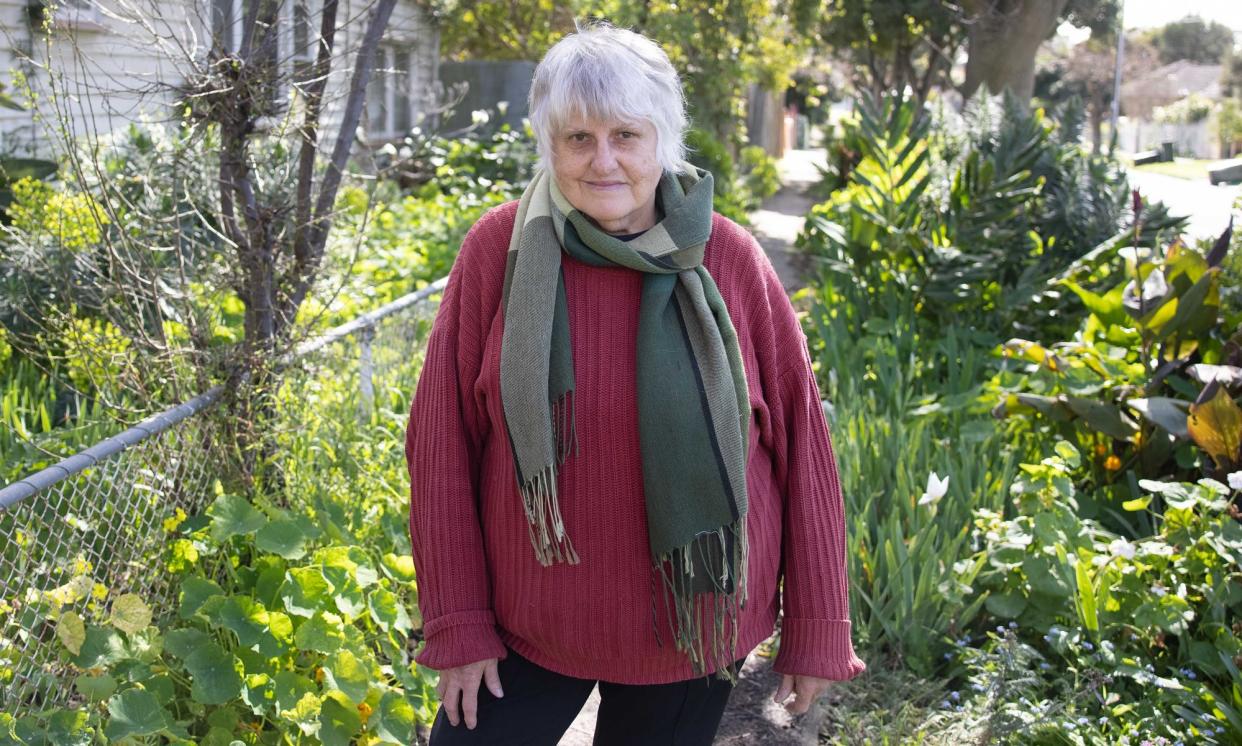Louise was evicted so her landlord could move in. A year later, the house remains empty

The house a 71-year-old renter called home for 25 years is still empty nearly a year after the landlord told her she had to go because they were moving in.
After Louise Wilksch was told her landlord would be occupying the property, she launched a campaign to find a new home that quickly spread through the local Brunswick East community in Melbourne.
Related: Louise lived in her rental for 25 years. Now at 71 she needs to find a new home
In Victoria, landlords are only allowed to end a lease under certain conditions, including if they or a family member are moving into the house. Renter advocates say the fact Wilksch’s house is still empty proves state laws surrounding evicting tenants and taxes aimed at empty dwellings do not work.
Several neighbours contacted Guardian Australia to voice their dismay that the house had been left empty this long.
“They haven’t done anything to the house – certainly not occupy it – and it’s been left to decay,” one neighbour wrote.
“It’s sitting there empty [and] has been empty since they uprooted Lou, causing serious stress to her, and in an inner-city spot.”
Wilksch’s garden – which she spent years growing – has been pulled up, while there is grass in the gutters, mould on the side of the house and plants growing through the windows.
The landlord was contacted for comment but did not respond. There is a heritage overlay on the house, which means demolition or external changes to the building would probably require a permit. Guardian Australia understands there are no planning permit applications before council.
If a property is empty in Victoria for longer than six months, owners are required to pay the vacant residential land tax. In May, the government announced it had targeted five buildings and found 177 properties liable for the tax.
In 2023, 1,013 properties were assessed for VRLT, with $11.3m collected, up from 910 in 2022 when $9.8m was raised.
The State Revenue Office would not confirm whether the property Wilksch lived in was on the list. With the help of her agent, Wilksch found a new home in Coburg. Although she says she is happy now, she describes the moving process as “traumatic”.
A rental advocate, Jordan van den Berg, who asked the public to submit empty dwellings to a database, has amassed a list of more than 1,200 since April.
“Those are predominantly in Victoria and New South Wales,” Van den Berg says. “We’ve all seen one, we’ve all seen an abandoned house. It’s not unusual.”
Last year figures from the Australian Bureau of Statistics showed there were up to 136,000 long-term vacant properties across the country.
“These are all homes that could help someone,” Van den Berg says. “We have more abandoned properties, and we have people experiencing homelessness. That’s just the fact of the matter.”
ABS data shows that there are 122,494 people in Australia experiencing homelessness.
Van den Berg says if a property stays vacant, the only real way a tenant can seek recourse is to do it themselves. “Why should the victim be the prosecutor?”
A spokesperson for the Victorian government said it was “cracking down” on vacant properties.
“Expanding vacant residential land tax will free up empty houses for rent and sale, boosting supply and making homes more affordable,” the spokesperson said.

 Yahoo News
Yahoo News 
